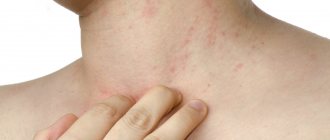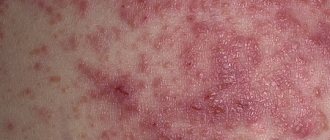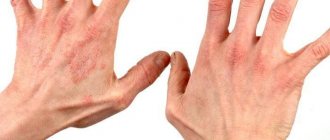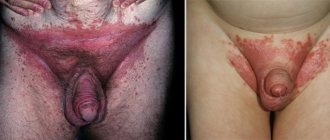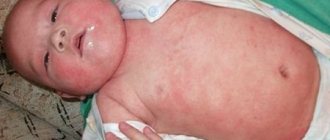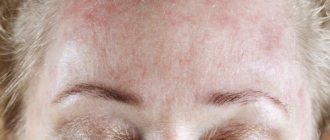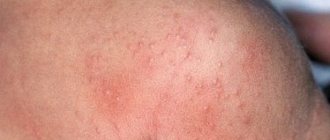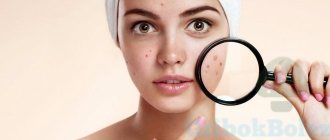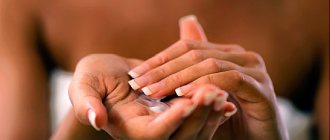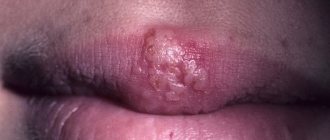One of the most common skin diseases is atopic dermatitis. It affects up to 20% of the population, and it occurs equally often in both sexes. This is a chronic inflammation of the skin, causing a feeling of dryness and itching. It is of an allergic nature. The disease is diagnosed in at least 10% of infants, usually goes away after reaching 3-7 years of age, and can return with relapses in adulthood. Atopic dermatitis often occurs during pregnancy, causing considerable concern for expectant mothers.
Why does the disease appear?
The pathology is hereditary. It will manifest itself with a probability of up to 80% if both parents are atopic, and with a probability of 30-50% if one of them suffers from the pathology. The disease, although with a lower probability (up to 20%), can be detected if one of the more distant relatives has allergic rhinitis, asthma, or eczema.
The immune system of atopic people is overactive and prone to inflammation. The protective barrier is weakened, and the skin dries out and is more susceptible to infections. In response to the penetration of allergenic substances, the body begins to increase the production of immunoglobulin E and histamine. The permeability of capillaries increases, and as a result, allergic symptoms appear - itching, redness, rash, etc. Genetic predisposition does not mean that a person will certainly develop a pathology. After all, it is not dermatitis itself that will be inherited, but only the tendency to it.
The following factors (triggers) can provoke a pathological process:
- life in a metropolis with developed industry and unfavorable ecology;
- frequent inclusion in the menu of products with a high allergy index;
- smoking (passive smokers are also at risk), alcohol;
- uncontrolled use of medications;
- bacterial, fungal and viral infections;
- excessive psycho-emotional stress.
Catalysts of pathology can also be flowering plants, household chemicals, clothing made of synthetic fabrics, cosmetics, saliva and hair of pets, etc. Sudden changes in humidity and temperature, and lack of sun can affect this. Atopy worsens in winter due to excessive dry air from working radiators. Sun and high humidity lead to remission and relief of the condition.
When a woman is pregnant, in addition to the above, her hormonal levels change significantly. Among pregnant women suffering from atopic dermatitis, 20% of women experience an exacerbation of the disease, and in the remaining 80% of patients, atopy appears for the first time. Typically, these 80% have naturally dry, easily irritated skin (so-called atopic diathesis), and/or have relatives who suffer from allergies.
Dermatitis in pregnant women: causes, symptoms, treatment features
The concept of dermatitis unites a group of inflammatory skin diseases that have different origins and differ in clinical signs. Children, people with severe chronic pathologies or allergies, and pregnant women are most susceptible to the disease. Dermatitis in pregnant women can occur in the last weeks of pregnancy, and after childbirth it goes away without special treatment. But if inflammation develops in the early stages, without proper treatment, the pathology worsens and causes a disruption in the woman’s general well-being, which can affect the development of the child.
Normally, human skin has protective functions, however, the period of bearing a child is almost always accompanied by a weakening of both local and general immunity. The female body becomes more susceptible to infections and external factors. The consequence of this condition can be inflammation of the skin. Most often, inflammatory processes are localized in the forehead and temples, on the neck, elbows and under the knees, in skin folds.
In addition to the weakening of general immunity, hormonal changes occur in a woman’s body. Increased production of estrogen, progesterone and cortisol suppresses the local immunity of the skin, resulting in the activation of opportunistic bacteria that are present on the skin of any person.
The main factors that provoke skin inflammation are:
- physical impact (excessive friction and pressure on the skin, clothing made of synthetic fabrics, solar radiation, high or low temperature);
- chemicals (household chemicals and personal care products, cosmetics);
- medications for topical use (for example, hormonal ointments and creams).
- The risk of developing pathology increases with constant nervous tension, frequent stress, physical fatigue, chronic bacterial or viral pathologies, and skin mycoses.
During pregnancy, dermatitis is often diagnosed in women who have a hereditary tendency to allergic reactions.
For reasons that cause pathological processes, several types of dermatitis are distinguished.
Atopic
Atopic dermatitis always occurs in a chronic form, it is first diagnosed in childhood, and recurs in adults. Exacerbation of dermatitis during pregnancy can be caused by taking medications, eating allergenic foods, or inhaling vapors of various chemicals.
Atopic dermatitis during pregnancy is caused by a woman’s complicated allergic history (hay fever, bronchial asthma in close relatives), and factors contributing to the onset of relapse are changes in hormonal levels and weakened immunity.
Symptoms
Allergic dermatitis in pregnant women manifests itself in the first half of pregnancy (until the third trimester - in 75% of cases). After childbirth, the disease subsides, but it is possible that symptoms will appear in a few months due to newly occurring hormonal changes.
Doctors distinguish 3 stages of pathology development.
Easy. Characteristic:
- mild rash on the neck, in the popliteal fossae, on the elbows;
- swelling on the skin;
- There is almost no peeling and hyperemia (redness) of the skin, itching appears from time to time, usually in the evening.
Average:
- the rash also spreads to the face, chest, stomach, thighs, back;
- itching intensifies and worries more often;
- peeling begins;
- hyperpigmentation of the eyelids is possible: the eyes appear as if surrounded by dark circles.
Heavy:
- constant unbearable itching. It leads to nervous breakdowns, the woman suffers from insomnia;
- the skin is swollen and peeling;
- red spots, nodules (up to 2 mm), bubbles up to 1 cm (exudates) appear, where there is transparent content;
- Possible pustules, small open wounds (excoriations) that appear due to scratching. Infection can easily get there.
Exacerbation of atopic dermatitis to a severe stage is typical for pregnant women who have previously suffered from this disease for a long time. This condition requires hospital stay.
Causes
The etiology of pathologies during pregnancy is still being studied, but most experts note their connection with the restructuring of the body in terms of physiology, immunity and hormonal, which provokes the beginning of the process of skin changes, including stretching of connective tissue fibers, increased activity of eccrine sweat glands.
Factors directly related to the causes of dermatoses include:
- increased Th2 activity, which occurs due to changes in immunity in pregnant women in order to prevent fetal rejection;
- connective tissue damage due to an increase in abdominal volume due to the growth of the uterus, skin sprains and defects in connective tissue fibers;
- hereditary predisposition, with autoimmune processes at the basis of specific dermatoses of pregnant women.
Does the pathology affect the course of pregnancy and the fetus?
Atopy is not an obstacle to conceiving a baby, does not affect pregnancy, does not harm the child and will not affect childbirth. Due to incessant itching and insomnia, the expectant mother usually becomes nervous, tearful, and feels chronic fatigue. To a certain extent, her psycho-emotional state is transmitted to the baby, but not enough, of course, to talk about a significant impact on the fetus.
However, the expectant mother needs to know that against the background of atopic dermatitis, a genetic predisposition to atopic diseases (hay fever, asthma, eczema) in the child cannot be ruled out. It doesn’t necessarily turn into a disease, but there is a risk.
Atopic dermatitis during pregnancy
Atopic dermatitis is considered one of the most common skin diseases. According to statistics, it is women who most often suffer from this disease. In addition, atopic dermatitis is transmitted hereditarily from mother to child. If both parents are atopic, the risk of getting this disease in the baby increases several times.
During pregnancy, a number of significant changes occur in the body of the expectant mother. Unfortunately, sometimes such changes can lead to the appearance of various pathologies. One of these consequences is atopic dermatitis. This allergic disease can “sleep” in the body for years and “wake up” at the happiest moment in every woman’s life - during pregnancy.
Diagnostics
The diagnosis must be made by a dermatologist or allergist. If atopy has already been observed previously and is now worsening due to pregnancy, the diagnosis can be easily established based on the characteristic clinical picture. If signs of pathology appear for the first time, then it can be confused with other skin diseases that appear during pregnancy.
A woman must donate blood to check the level of immunoglobulin E. Exceeding its permissible values indicates that this is an allergy, and not, for example, an infection. A blood test also allows you to determine which allergen irritant enhances the negative reaction.
Treatment
Treatment of atopic dermatitis should be carried out with means that are as safe as possible for the pregnant woman and the fetus. The main goal is to reduce inflammation of the skin and eliminate itching. It is also important to keep your skin hydrated and prevent it from drying out in the future.
Drug therapy
The doctor may recommend:
- Fat-based moisturizing emollient creams for daily care (Losterin, Lipikar, Emolium, etc.). They remove irritation, heal cracks, and reduce itching. Typically used after a shower or, if excessively dry, additionally throughout the day.
- Steroid creams. Only the weakest of them are prescribed, for example, hydrocortisone ointment, and in a minimal dosage (a tube of 15-30 g is enough for a course). Apply exclusively to inflamed areas.
- Antihistamines. Loratadine, Clemastine, Chlorpheniramine, Cetirizine, Dimetindene are considered safe.
- Steroid tablets (Prednisolone, etc.) are prescribed in the most severe cases. Minimum doses are recommended and the course cannot last longer than two weeks.
- Antibiotics - Cefazolin, Ceftriaxone, etc. Are effective if eczema is complicated by infection.
- Enterosorbents - Polysorb, Enterosgel, Polyphepan, Atoxin, etc. They quickly remove toxins from the body.
- Probiotics to improve immunity - Lactobacterin, Probiform, Biobakton, Bifidumbacterin, etc.
Diet
During an exacerbation of pathology, it is necessary to limit or completely remove from the diet:
- nuts;
- exotic fruits and citrus fruits;
- fish and broths from it;
- seafood, caviar;
- chicken eggs;
- lamb, pork;
- chocolate;
- honey;
- strawberries;
- red currants;
- cherries;
- tomatoes;
- carrot;
- mushrooms;
- soy;
- too spicy foods, smoked foods, spices, marinades, preserves, fast food.
The basis of the daily menu should be fermented milk products, lean meat, whole grain bread, cereals, green or yellow vegetables and fruits. It is better to boil food, grill it, steam it, or stew it with a small amount of vegetable oil.
Folk remedies
They must be used with extreme caution, especially during pregnancy. The reaction may be unpredictable. Consultation with the attending physician is required. It should be taken into account that although traditional methods will alleviate the condition, they will not replace the main therapy.
Recipes:
- 1 tsp. Pour 150 ml of boiling water over crushed hop cones and dry string. Boil for 5 minutes. Strain the cooled infusion and drink before bed. Course – 2 weeks.
- 1 tbsp. l. fresh dandelion leaves (chopped) pour 500 ml of boiling water, leave for 3 hours. Drink 250 ml twice a day. Duration – 3 weeks.
- Mix 30 g of crushed propolis and 120 ml of vegetable oil in a heat-resistant glass bowl and place in the oven for 15 minutes. Lubricate inflamed areas.
- Pour 500 g of oak bark and 200 g of oatmeal into 5 liters of boiling water and boil for 15 minutes. Strain and pour into the bath. It removes rashes and itching well. It is recommended to take such baths 2-3 times a week.
- Grate raw potatoes and make compresses from the pulp or lubricate inflammation with potato juice.
- Combine Kalanchoe juice and honey in equal proportions. The mixture is infused for a week. Then lubricate the inflamed areas. The ointment perfectly relieves itching.
Prevention
Simple rules help to avoid exacerbation of the disease:
- As far as possible, avoid contact with the allergen: remove flowering plants from the room where you sleep, roll up the carpets, replace blankets and pillows with down with options with hypoallergenic fillers, etc.;
- use special cosmetics for pregnant women or infants;
- wear clothes made from natural, breathable materials;
- daily wet cleaning is important;
- try to avoid stress.
Atopic dermatitis during pregnancy cannot be completely cured. But by scrupulously following all the doctor’s recommendations, you can significantly reduce, or even completely eliminate, the risk of its manifestation, as well as the likelihood of atopy appearing in the baby in the future.
Tips and tricks
You can support the skin and reduce the provoking factors of the disease if:
- eliminate all allergens and things that retain dust (furniture, books, toys); make all bedding synthetic;
- use a hypoallergenic diet if necessary (for example, table No. 5), especially with concomitant food allergies;
- limit contact with detergents and chemicals, use only hypoallergenic cosmetics;
- do not use regular soap, do not dry out the skin, and do not use the bath frequently;
- wear only cotton clothing touching the body;
- reduce nervous and physical stress during pregnancy;
- Constantly use emollient creams and try not to scratch the skin;
- use high-quality shampoos without additives, only soft washcloths, neutral cream with ceramides after a shower;
- remove pets from the premises or wash them weekly;
- eliminate insects and mold from the house;
- keep the humidity level in the room above 55%, and the air temperature up to 23 degrees, carry out wet cleaning and ventilation every day.
